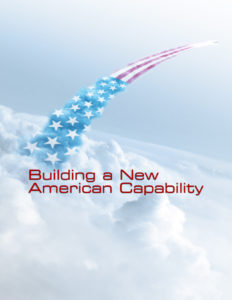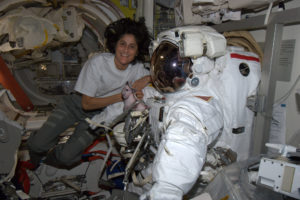 NASA’s Commercial Crew Program has been redefining space system development for low-Earth orbit by forming strong public-private partnerships with the aerospace industry to encourage innovation while maintaining NASA’s high safety standards and leveraging the agency’s 50-plus years of spaceflight experience.
NASA’s Commercial Crew Program has been redefining space system development for low-Earth orbit by forming strong public-private partnerships with the aerospace industry to encourage innovation while maintaining NASA’s high safety standards and leveraging the agency’s 50-plus years of spaceflight experience.
Commercial crew has partnered with private companies, Boeing and SpaceX, to fly astronauts to the International Space Station. The goal of partnering with industry is to advance a diverse economic market in space.
“Once NASA has certified its two commercial partners’ systems to fly, we will have also kick started the commercial spaceflight industry, opening the door for private, paying customers to fly in space,” said Steve Payne, launch integration manager for commercial crew. “This is a truly exciting time for all of us.”
Since 2010, NASA also has worked with Blue Origin on spacecraft, engines and systems and Sierra Nevada Corporation on the Dream Chaser spacecraft. NASA selected the Dream Chaser’s cargo version to ferry supplies, equipment and experiments to and from the orbiting laboratory starting in 2019. Both Sierra Nevada Corporation and Blue Origin also are working toward the goal of flying people to and from space. Read the complete story at http://go.nasa.gov/1EIx5m6
 What would you take to space? Astronaut Suni Williams took a cutout of her dog, Gorbie, on her first mission to the International Space Station. Kids 4 to 12, draw what you would take and enter it in our Children’s Artwork Calendar contest! Your entry could be beamed to the space station! http://go.nasa.gov/2fvRLNf
What would you take to space? Astronaut Suni Williams took a cutout of her dog, Gorbie, on her first mission to the International Space Station. Kids 4 to 12, draw what you would take and enter it in our Children’s Artwork Calendar contest! Your entry could be beamed to the space station! http://go.nasa.gov/2fvRLNf

 Boeing will use solar energy to power the company’s CST-100 Starliner for crew missions to and from the International Space Station as part of NASA’s Commercial Crew Program. The sun’s energy offers a reliable and efficient power source for the Starliner just as it does for the space station and satellites.
Boeing will use solar energy to power the company’s CST-100 Starliner for crew missions to and from the International Space Station as part of NASA’s Commercial Crew Program. The sun’s energy offers a reliable and efficient power source for the Starliner just as it does for the space station and satellites. NASA’s Commercial Crew Program has been redefining space system development for low-Earth orbit by forming strong public-private partnerships with the aerospace industry to encourage innovation while maintaining NASA’s high safety standards and leveraging the agency’s 50-plus years of spaceflight experience.
NASA’s Commercial Crew Program has been redefining space system development for low-Earth orbit by forming strong public-private partnerships with the aerospace industry to encourage innovation while maintaining NASA’s high safety standards and leveraging the agency’s 50-plus years of spaceflight experience. There are no grocery stores in space, but there may soon be farms. Very small farms that are important to a crew conducting a mission to deep space. That’s because our astronauts will need to grow some of their own food. Researchers on Earth and astronauts on the International Space Station are already showing what is needed to grow robust plants in orbit.
There are no grocery stores in space, but there may soon be farms. Very small farms that are important to a crew conducting a mission to deep space. That’s because our astronauts will need to grow some of their own food. Researchers on Earth and astronauts on the International Space Station are already showing what is needed to grow robust plants in orbit.


